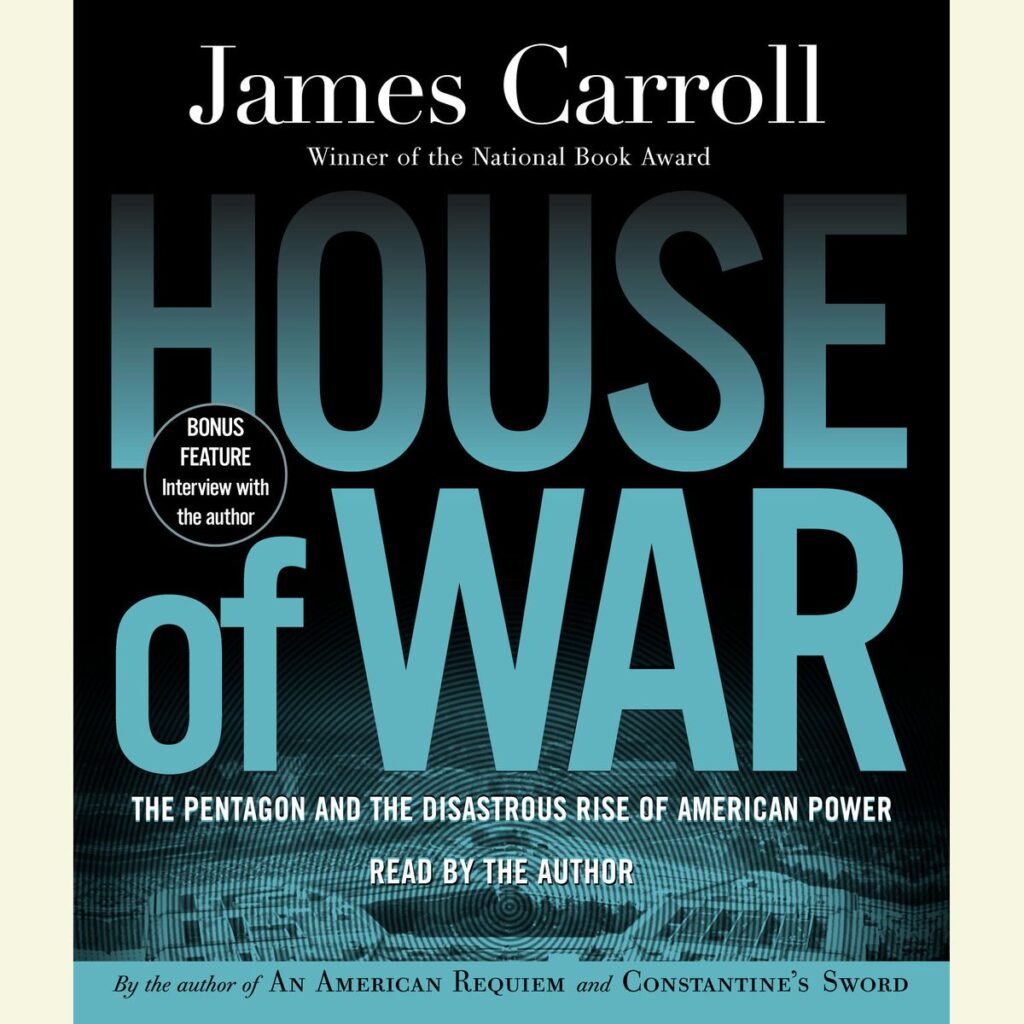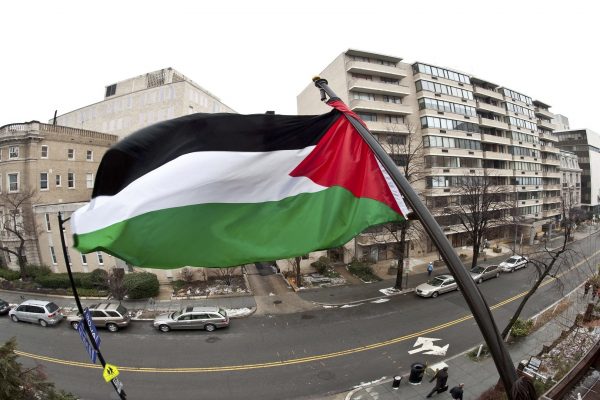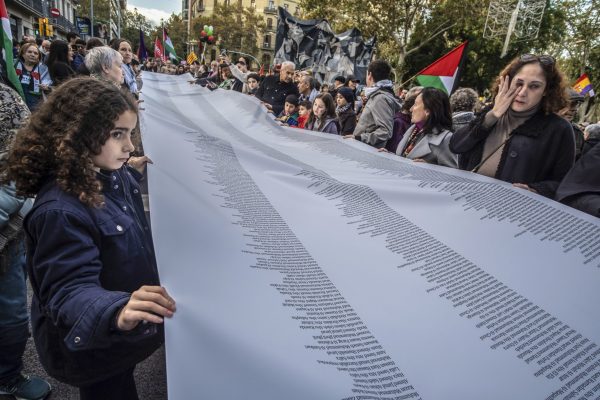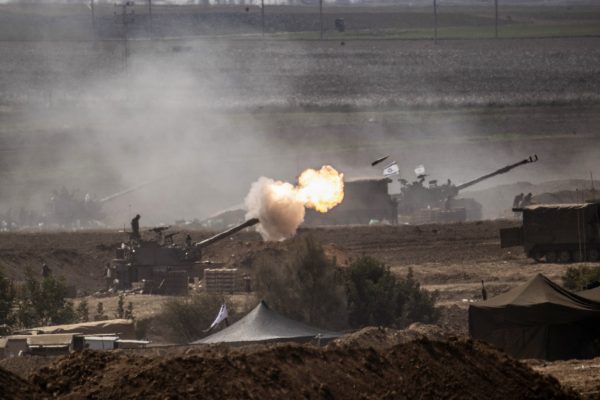A fatal riddle of our time is why the United States, which in the end won the Cold War peacefully and emerged from it as the uncontested world hegemon, has in a few years thrown away its moral and political leadership through reckless and illegal war.
James Carroll, in his latest book, House of War, illuminates part of the answer. Carroll attributes most of the blame to forces within the Pentagon—his “house of war”— and in particular the U.S. Air Force. He argues that it is chiefly to them—to their professional needs and paranoid mentality—that we owe the attitudes that have prevented the United States from taking advantage of the peaceful end of the Cold War, and that have shaped the disastrous response to 9/11: “The story of the Pentagon’s rise marks an ongoing melding of personal and public paranoia, of psychological and political stresses, a process by which unsubstantiated ephemera were again and again transformed into tangible reality, taking on heft and moral gravitas.”
Carroll is in a special position to tell this story. His father, USAAF Lieutenant General Joseph Carroll, was not a professional military officer, but as a former senior FBI official he rose to a high military rank as the head of the Air Force’s Office of Special Investigations and, later, of the combined Defense Intelligence Agency in the 1960s.
As the son of a general, Carroll was brought up with other Air Force brats, and in the presence of legendary figures such as Air Force General Curtis LeMay. As a child he played in the corridors of the Pentagon, and he later dreamed of a career as a pilot, though he became a Catholic priest instead. In the 1960s he joined the Catholic resistance to the Vietnam War, alongside such figures as Father Philip Berrigan. Eventually he left the priesthood, raised a family, and became a distinguished novelist, but his work remains allied to the religious and ethical opposition to war and militarism that he embraced in the Vietnam era.
Carroll brackets “the disastrous rise of American power” between the laying of the foundation stone of the Pentagon in September 1941, in a swampy patch of ground then called “Hell’s Bottom,” and the terrorist attack on the building almost exactly 60 years later. He explores his theme through the lens of the history of the military high command in the Pentagon, with an emphasis on the Air Force. This history is in part personal: it includes the experience of his father as a Cold War hawk and his own resistance against the misuse of military intelligence during the Vietnam War, which he paid for with his job after Nixon’s election.
Carroll makes some excellent observations about the way that habits of thought deliberately cultivated during the Cold War have continued to haunt the United States during the “war on terror.” One is the tendency to question the rationality of each and every enemy or rival. Once it was the “Commies” who were so possessed with hatred and an “Asiatic” disregard for their own deaths that they would “blow up the world for no good reason.”
Since 9/11 those portrayed in this way have been not merely al Qaeda—about whom it may be true—but Saddam Hussein, the regime in Iran, Hizbullah, and, in the language of the most hawkish elements in the United States and Israel, the Muslim world in general. Thus, at a lunch last year, I heard a senior Democrat staffer from the Senate telling a group of Europeans that “we may all wake up one morning and find that Iran has fired a nuclear missile at Israel”—the Iranians apparently being uninfluenced by the fact that if they did that, automatic Israeli nuclear retaliation would mean that Iran would cease to exist as an organized society within the next hour.
The Cold War did introduce something quite new into American history: a state system of permanent semi-mobilization for war, institutionalized in the military-industrial complex and the academic bodies linked to it. As C.Wright Mills wrote in 1959,
For the first time in American history, men in authority are talking about an “emergency” without a foreseeable end . . . the American elite does not have any real image of peace—other than as an uneasy interlude existing precariously by virtue of the balance of mutual fright. The only seriously accepted plan for “peace” is the fully loaded pistol. In short, war or a high state of war preparedness is felt to be the normal and seemingly permanent condition of the United States.
This “emergency without end” has now been repeated in an intensified form in the “war on terror”; but the nature of the security establishment and military-industrial-academic complex created by the Cold War also helped make the United States poorly fitted to fight against terrorists. Instead, this complex of institutions and attitudes requires states as enemies—and if such enemies are not readily apparent, it will instinctively seek to conjure them up.
So important did the military-industrial sector grow during the Second World War and the Cold War—with space exploration as a minor adjunct—that it is now fundamental to the economy, economic growth, and, above all, technological development. Despite the waste and corruption this model brings, this is in some ways a successful industrial-development strategy for a country whose free-market ideology would otherwise prohibit such significant economic intervention by the state.
But while new to the United States, this kind of system and atmosphere have been all too widespread in world history. In the decades before 1914, all the major powers with the exception of Britain lived in this state of permanent semi-mobilization. This reflected security conditions of the European Continent at the time; but as in the United States during the Cold War, it was also first created and then fed by great military, bureaucratic, and industrial blocs with strong vested interests in maintaining a mood of national paranoia, of fear and hatred of other countries, and of international tension.
Every country had its version of the U.S. Committee on the Present Danger, which mobilized fear of the Soviet Union in the early 1980s. Every European country before 1914 had its own repeated and carefully stoked panics over the enemy’s military capabilities, such as the “missile gap” scare, which the Democrats created as a weapon against Eisenhower with the help of such intellectual allies as Edward Teller. As had happened elsewhere, this habit of mind and behavior became so ingrained in the U.S. establishment (by no means only the Pentagon) that it was not greatly affected even by the amazingly complete and peaceful collapse of the Soviet enemy at the end of the Cold War.
I can testify to inconceivable scenarios of Russian aggression and international war from my own experience of scenario-building sessions and discussions with U.S. officials in the 15 years since the Soviet Union collapsed. I came to Washington on a visiting fellowship in 1996, fresh from reporting on the immense retreat of Russia from empire—with the partial exception of Britain, by far the greatest peaceful abandonment of empire in all history. I had also covered both the Russian military defeat in the first Chechen war and the mixture of corruption, cynicism, materialism, and political apathy that gripped Russian society after the fall of Communism.
On arrival, I was first astonished and then horrified to find large sections of the American elites—serving officials as well as media commentators—dedicated to creating an image in the minds of the American people of a menacing Russian superpower that bore only a tangential relation to reality; and this line was swallowed by much of the American media and public opinion. As a consequence—one detailed with outrage by Carroll—the ending of the Cold War and the complete collapse of the “enemy” has not led the United States to relax in the least its nuclear stance toward Russia. With this experience behind me, I was not too surprised by the success of the Bush administration and its media allies in conflating al Qaeda and Saddam Hussein.
If 9/11 had not occurred, many of the officials and commentators who have since used the terrorist attacks as an argument for radical unilateralism would have directed their energies toward stirring up American public hostility to Russia and China, and toward manufacturing crises in relations with these states.
But tension is not war; and since the Vietnam War at least, much of the American military-industrial complex, and the institutes and academics associated with it, might be described as militarist but not bellicose. Consciously or unconsciously, they need a degree of permanent international tension to justify their levels of spending, but they do not want to fight wars, or at least not big, long ones with states like Russia and China, or even small long ones in places like Iraq. The American generals of the Clinton era have been described as “aggressive only about their budgets.” Rather than Carroll’s “house of war,” the Pentagon might more appropriately be called a house of pork.
Even in the last decades of the Cold War, under the roiling waves of public anxiety, whipped into spray by the winds of political propaganda, the feelings of the security establishment were actually relatively complacent. In recent years, beneath all the talk of Russian and Chinese threats, very few members of the U.S. security establishment have wished for conflict with these states. The desire and need are for tension, not conflict; for large-scale military spending, not full-scale war.
And although House of War was obviously written in response to the actions of the Bush administration after 9/11, it does not bring out just how different the civil-military relationship has been in recent years compared to the first three decades of the Cold War. Carroll still sees the key issue as strengthening civilian control to moderate the wild and dangerous ambitions of the generals. But under Bush, as Seymour Hersh and others have chronicled, it is the uniformed military that has provided a barrier to the wilder adventurism of the Bush administration.
Carroll’s book does not take sufficient account of changes in mentality since 9/11. Thus, because of their role in the Cold War, Carroll continues to express an intense dislike of traditional realists such as General Brent Scowcroft without acknowledging that some of them have become important opponents of the Bush administration. The same is true of his strange characterization of Colin Powell and Richard Armitage as militarist “zealots.” Powell can certainly be faulted for weakness and conformism in not opposing the Bush administration’s drive for war with Iraq, but there was nothing “zealous” about his behavior then or at other times. His entire philosophy of war, expressed most notably in the “Powell Doctrine,” is in opposition to casual military adventures.
As the child of an Air Force family, Carroll also does not seem fully to appreciate the difference between the Air Force on the one hand and the Army and Marines on the other when it comes to waging war, at least since Vietnam. The Air Force has to believe in the efficacy of aerial bombardment in the same way that the Catholic Church has to believe in God—that is, after all, its raison d’être. The strategy also holds tremendous appeal for politicians and the masses because it seems to promise an easy, sanitized victory without the need for a messy ground war. In consequence, in recent years the Air Force has almost always been more gung-ho for military action than the Army and Marines, who have a very good notion that the fly boys are likely to fail, and that the grunts on the ground will have to do the fighting and dying.
Thus, although extremely valuable in parts, Carroll’s book does not adequately address the complexity of the issues that he raises and the position of the military in the U.S. system today. The main reason is that although his book is a massive 657 pages long, it is still much too short to cover all the multifarious subjects he raises, from the success or failure of the campaigns against German and Japanese cities from 1943 through 1945 to the effect that the issue of gays in the military had in deterring Clinton from seeking serious military reductions after 1992.
As a result of Carroll’s trying to do too much, certain critical aspects of the Cold War are treated lightly or ignored altogether—a tendency exacerbated by the author’s visceral dislike of the Republican tradition. Carroll takes a romantic view of John F. Kennedy, for example, while greatly downplaying Dwight D. Eisenhower’s role in resisting the more dangerous plans of the cold warriors in the eight years following 1952. Yet it was Eisenhower, through the Solarium discussions, who killed off the push for preventive war within the new Republican administration and the Pentagon—an episode that finds no mention in the book. Carroll also exaggerates the “insanity” of Nixon. He was a criminal and a gambler, but both in his opening to China and his pursuit of détente with the Soviet Union he showed an enlightened pragmatism that his successors would do well to learn from.
Other important themes are repeatedly raised but never fully investigated; for example, the question of how American affection for air power—like Britain’s in the 1930s and 1940s—is driven by a fear of American casualties on the ground. Readers might also expect more about Carroll’s tormented relationship with his father (it is absent here because he has addressed the subject fully in his previous work, American Requiem: God, My Father and the War that Came Between Us).
The issue of Carroll’s complex psychological relationship with his beloved childhood Pentagon is interesting and moving, and could be understood as a useful metaphor for the relationship between the American people and the military. But this deeper issue is never really addressed. Carroll expresses his exasperation with the naiveté and fanaticism of many of the antiwar protesters of the 1960s, with their calls for the “exorcism” of the demons in the Pentagon. At some level, though, he pits an essentially innocent American people against a Pentagon that, even if staffed by genuine patriots, is still in some sense alien to its own country.
In this, Carroll echoes so many left-wing and pacifist posters showing the mass of the people on one side and small groups of soldiers, oligarchs, and assorted elitist exploiters on the other. This picture is not only completely foreign to how the U.S. military is seen by the general public; it does not even correspond to reality. (For a highly critical but much more nuanced look at how militarism has come to permeate the culture, I recommend the works of Andrew Bacevich, a retired colonel and deeply patriotic Catholic conservative who has become a fierce critic of the Bush administration and its use of military power.)
The flaws in Carroll’s approach contribute to a critical problem for the American left. Although Carroll loved his father and in some strange way even loves the building of the Pentagon, as a pacifist he cannot really bring himself to love and identify with the U.S. military as an institution, or with the men in uniform, except as victims of the misdeeds of their superiors. So he cannot bring himself to admit the obvious, which is that had the U.S. military not been in Europe at all and not been shielded by the atom bomb, Stalin would indeed have marched to the Atlantic, with dreadful consequences for the peoples of Western Europe. Similarly, without the credible threat of U.S. military force, Saddam Hussein’s invasion and annexation of Kuwait in 1990 would not have been reversed.
Carroll’s whole attitude to war compromises his ability to ask some hard questions. His criticism of the horrors of aerial bombardment of civilian targets is justified, as is his outrage at the truly evil fantasies of some of the leaders of the Strategic Air Command during the Cold War. But he avoids the question of whether in some circumstances war, with all its evils, is nonetheless justified and unavoidable; how, if so, one motivates young men to fight and die; and how commanders can perform their duty of minimizing their own men’s casualties without inflicting massive damage in civilian areas, if that is where the enemy is.
I believe that both U.S. policymakers and committed citizens need to base their thinking on a different tradition with equally deep religious roots but a much closer and more effective relationship to political and international realities. This is the philosophy of “ethical realism,” propounded by the great protestant theologian Reinhold Niebuhr and formulated in somewhat different ways by George Kennan and Hans Morgenthau. Ethical realism (as John Hulsman and I explain in our recent book of this name) traces its origins to St. Augustine and St. Thomas Aquinas and insists on strict moral constraints on what states and militaries can do, and ultimately demands that state policy pursue moral goals. At the same time, it views man as a fallen being, incapable of perfection though bound to work toward it; and it takes the same view of states.
As Niebuhr observed, man is a lion—a ferocious and carnivorous animal—but he is also “a curious kind of lion who dreams of the day when the lion and the lamb will lie down together”: “A valid moral outlook for both individuals and for groups, therefore, sets no limits to the creative possibility of concern for others, but makes no claims that such creativity ever annuls the power of self-concern or removes the peril of pretension if the force of residual egotism is not acknowledged.”
In other words, acknowledging reality does not mean approving of that reality, or abandoning the duty to try to change that reality for the better.
Moreover, because they owe a primary and enormous moral responsibility to the nations they are bound to defend, statesmen and soldiers may be morally justified in taking ruthless actions, though not if these are either gratuitously cruel or dedicated to the pursuit of inherently immoral ends. In other words, if we are to achieve anything practical without surrendering our principles we have to seek the City of God while recognizing that we live in this world and acting accordingly. As Hans Morgenthau wrote,
We have no choice between power and the common good. To act successfully, that is according to the rules of the political art, is political wisdom. To know with despair that the political act is inevitably evil, and to act nonetheless is moral courage. To choose among several expedient actions the least evil one is moral judgment.
If American progressives followed both this wise philosophy and a wise electoral strategy, they would seek to stop being anti-military while retaining their anti-militarism. They would express strong and genuine support for the U.S. armed forces while taking a much stronger stand against gratuitous war than the pseudo-opposition currently being put up by the Democratic leadership.
This is of course an extremely difficult exercise to perform, but it is essential if American progressives are ever going to succeed politically, and if they are ever going to perform the essential task of resisting the crazed imperial course adopted by the Bush administration, and seconded by the “liberal hawks” and much of the Democratic leadership. It would be nice to believe that the antiwar campaigners of the left that Carroll praises could succeed unaided, but there is very little historical evidence that they can. They need allies with roots not only in progressive America but in moderate and even conservative America.
As Bacevich and others have pointed out, the attachment of Americans in the heartland to the U.S. military is now so strong that any political force wishing to be elected to government will have to appeal to this sentiment to some extent. Nor is this a matter of opportunism. The men who are doing the fighting and dying in Iraq do deserve our sympathy and admiration, however great our fury at the leaders who sent them there. And like it or not, we need a military to defend us, and therefore will have to give them equipment and respect.
The growing discontent in the Army and Marine Corps with the Bush administration’s adventurism and contempt for military lives gives progressives a real opportunity to appeal to the uniformed military. It would be a tragedy to miss it.








